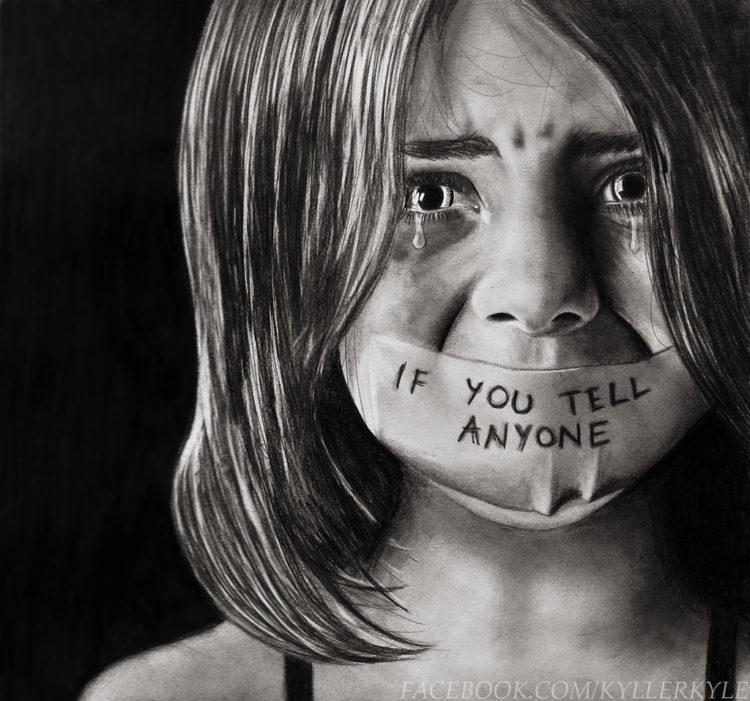By Charlotte Webster-
Child sexual abuse (CSA) remain very much hidden despite increases in the number of cases identified over the past year, experts have warned.
Relatively few cases of child sex abuse were placed on child protection plans despite record levels, leaving many more cases of abuse hidden, the Centre of expertise on child sexual abuse said.
The CSA Centre also identified a “concerning” postcode lottery in the identification of the abuse in assessments of children and in numbers subsequently placed on child protection plans, in a report on data trends in 2021-22 published on Wednesday(February 8)
.The centre helps support organisations from statutory and voluntary sectors to improve the data they collect about child sexual abuse, through publication of a practical guide to data improvement and ongoing research and support
The shocking report showed the need for both improved data and better training and support for practitioners in relation to sexual abuse.
One of the key recommendations by the Independent Inquiry into Child Sexual Abuse (IICSA) in its final report, placed a legal duty on adults to report child sex abuse if it comes to their attention.
The recommendations were set up in the wake of institutional failings revealed by the Jimmy Savile and other abuse scandals to address systemic underidentifiction.
Deputy director, knowledge and practice development, Anna Glinksi will be setting out what the findings of the Independent Inquiry into CSA and other key reports mean for you. Register for your place now.
Social Care Assessments
The number of children’s social care assessments in England that identified CSA as a concern rose by 15% in England in 2021-22, to 33,990, the highest level since this information started being published in 2015.
However, while CSA Centre welcomed this rise, it said it fell well short of the 500,000 children it estimated fell victim to sexual abuse each year, leaving a “huge gap between those children who get help and those who remain unprotected”.
The extent of underidentification led the Independent Inquiry into Child Sexual Abuse (IICSA) to recommend the government place professionals under a duty to report CSA whenever they received a disclosure, witnessed the abuse or observed recognised indicators of it. The government is due to respond shortly to the inquiry’s final report, published last October.
While assessments identifiying CSA had increased, those identifying child sexual exploitation (CSE) fell for the fourth consecutive year, to 16,330 in 2021-22, down from 20,000 in 2017-18, said the CSA Centre.
Low conversion of identified concerns to CP plans
And despite the number of child protection plans for which sexual abuse was listed as the main concern rising by 3%, to 2,520, in England in 2021-22, this was the equivalent of just one in 20 of the children whose assessments recorded CSA or CSE as a concern.
The difference was far smaller for other types of harm, with the number of assessments identifying neglect as a concern being only three times higher than the number of child protection plans under this category, and ratios of 4:1 for emotional abuse and 13:1 for physical abuse.
The CSA Centre suggested these figures hid the numbers of children on plans experiencing CSA, citing 2015 Office of the Chidren’s Commissioner research that found social workers were more likely to categorise children under neglect or emotional abuse than sexual abuse, where there were CSA concerns.
This was among a number of data gaps identified by the report, which also highlighted that no figures were recorded about sexual abuse concerns in relation to children on child in need plans, those referred to early help and looked-after children.
In Wales, the number of children placed on the child protection register for sexual abuse, whether uniquely or as part of the ‘multiple abuse’ category, fell, from 220 in 2020-21 to 190 in 2021-22.
The centre found three-fifths (92) of English authorities placed “no or very few children” on child protection plans because of CSA, with one-third (47) placing five or fewer children on plans.
This issue was regionally concentrated with all councils in the East of England and all but one in outer London placing two or fewer children per 10,000 population on a child protection plan for CSA. Rates were comparatively high in the West Midlands and Yorkshire and the Humber.
There were also significant local and regional variations in England in the the rates of assessments that identified CSA as a concern, the centre found.
In Wales, half of authorities placed more than two children per 10,000 in the population on child protection plans for CSA (including in cases of multiple abuse) with the rest below this rate.
Agency data relating to only a small minority of the child sexual abuse estimated that at least one in 10 children in England and Wales are sexually abused before the age of 16. The number of child sexual abuse cases recorded in official agency data and summarised in this report is far below these estimates of scale.
Local authority children’s services in England recorded concerns about
child sexual abuse in 33,990 assessments of children- a 15% increase on the previous
year (contrasted with a rise of only 3% in the total number of assessments), and represents
the highest level of identified concerns of child sexual abuse since 2014/15 when this
information started to be collected.
40% of these assessments concerned sexual abuse by a child. Concerns about child sexual exploitation (which, despite being a form of child sexual abuse, is treated separately in
such assessments) were recorded in 16,330 assessments, continuing a slow but steady
decrease over the past four years. Combined, one in 10 assessments undertaken by local authorities in England recorded a concern about some form of child sexual abuse.
In 2021/22, one in 10 child assessments undertaken by local authorities in England recorded a concern about some form of sexual abuse.
Seven local authorities recorded such concerns about more than 70 children for every 10,000 children living in the area.

